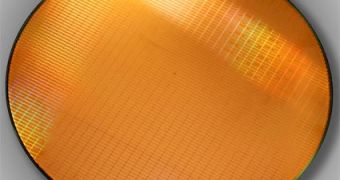Intel, the most important computer hardware manufacturing in the world, is preparing to defend its position against Advanced Micro Devices and its announced range of products with the November launch of a line of central processing units from the Penryn class that are bringing new 45 nanometer CPUs to desktop, mobile computer systems and servers.
Intel's new range of products includes both dual and quad core architectures and while the company is touting the advantages of its Penryn line, it also prepares for the launch of a hardware platform that may prove even more important for the company, as it may open several new markets.
The new product that is in the making now is the Silverthrone and it can be considered the heart of the Intel Menlow hardware platform. While this central processing unit runs at only 1.7GHz maximum, which is quite low for today's standards, it is too built using the 45nm fabrication process and it was designed and engineered to be used in Mobile Internet Devices, MID for short, or in ultra mobile computer systems. Apart from the MID and UMPC use, the Silverthrone may very well be used in computer systems aimed at the emerging markets, where the price tag is very important.
According to the news site tgdaily, Intel will release the first batch of Silverthrone central processing units with operating clock speeds between 1.1 and 1.7GHz and the whole range of CPUs will also come equipped with 512 KB of L2 cache memory. The Menlow hardware platform is due to come out during the first half of the next year and it is aimed at replacing the current McCaslin platform for mobile devices that is based on the A100 and A110 processing units that run at 600MHz and 800MHz.
The A series of processing units is based on the Stealey core, which in turn is a derivative of the 90nm Pentium M processor based on the Dothan core. While Intel said that the new mobile processing unit will not excel in terms of speed and computing power, it needs not worry about running Windows Vista, but rather specialized and lighter operating systems.
While it may sound impressive from the computing power point of view, the Silverthrone is packing advanced energy saving features that let it run on ten times less power than the Intel ultra mobile computing platform that was released in 2006. Another good point for it is that its manufacturing process is quite cheap as one 300mm silicon wafer can produce as many as 2000 Silverthrone processors, while the very same wafer can produce only a fraction of that number of Penryn chips.

 14 DAY TRIAL //
14 DAY TRIAL //